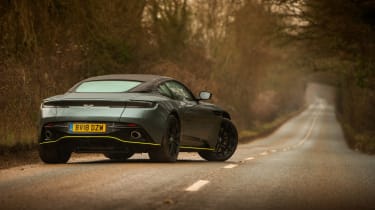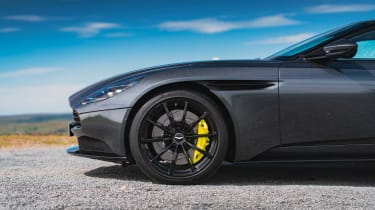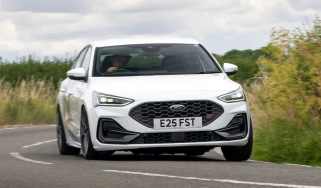Aston Martin DB11 review – design
The DB11 has aged remarkably well, and shares its overall proportions with the newer, more aggressive DB12
Along with the many Aston Martin firsts introduced by the DB11, it was also the car that debuted a reformed design language under the leadership of Marek Reichman. That language has now been spread across the whole range and continues with the DB12; albeit with a bolder, meaner flavour.
The front end is defined by the typical Aston Martin grille, flanked by all-LED headlights and a huge clamshell bonnet. From here back, the bodywork then contorts and tapers towards the swollen rear arches, terminating in a flat rear end that eschews the typical boot flick seen in other Astons, leaving an elegant pebble-shaped rump.
Reichman also visually split the body from the roof section, offering ‘roof strakes’ as Aston calls them, in a contrasting carbon or black finish. Combined with the small tail lights, the DB11 is more colour sensitive than its more svelte predecessors due to the imbalance of mass top to bottom, but get it right and there are fewer more dramatic cars.
The DB11 Volante is perhaps the most successful example of the DB11’s design, though, with that controversial roof removed in favour of the compact folding soft-top. Without the visual weight above, the DB11’s aggressive hips have some room to breathe, while the redesigned rear deck gives the overall design more structure through the use of deep profiling that frames the cabin. It all looks very resolved, and when paired with Aston’s flamboyant interior finishes is every bit as glamorous as one would expect of a drop-top Aston Martin.





